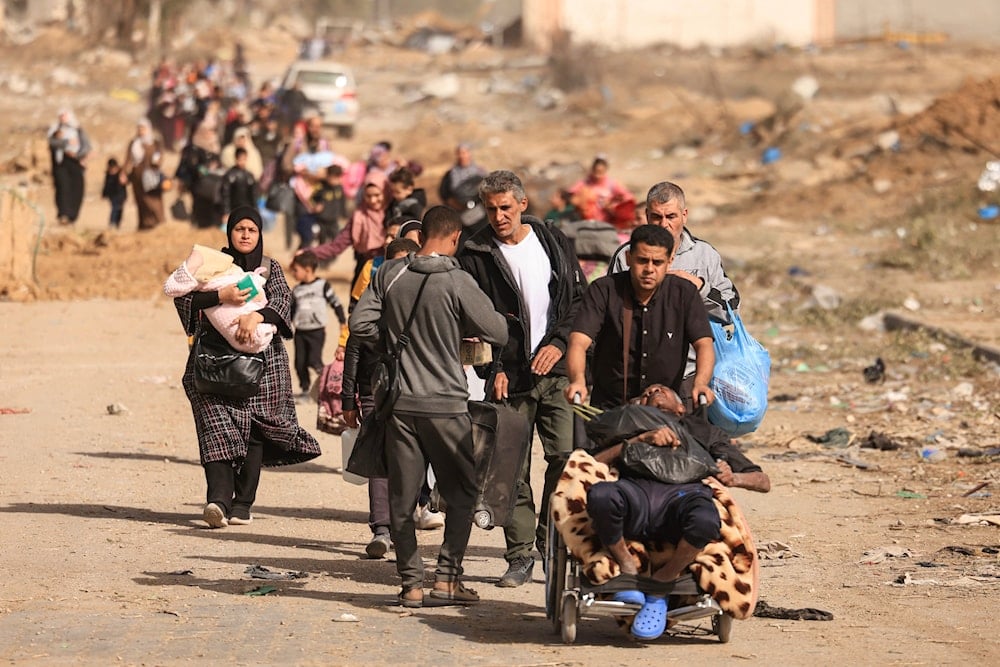80% of Gaza population estimated to be internally displaced: OCHA
An OCHA report says Israeli occupation forces "continued calling and exerting pressure on [Gaza] residents of the north to leave southwards."
-

Palestinians fleeing the north walk along the Salaheddine road in the Zeitoun district on the southern outskirts of Gaza City on November 26, 2023. (Photo by MAHMUD HAMS / AFP)
The United Nations Office for the Coordination of Humanitarian Affairs (OCHA) documented Israeli violations of the four-day truce agreement between the Israeli occupation and the Palestinian Resistance.
In a report, OCHA mentioned that on November 25, Israeli occupation forces "continued calling and exerting pressure on residents of the north to leave southwards through a “corridor” along the main traffic artery, Salah Ad Deen Road, between 9:00 and 16:00."
"Furthermore, they declared that the movement of people from the south to the north was forbidden," the report noted, adding that the occupation forces "had been arresting some people moving through the “corridor.”"
OCHA cited internally displaced persons (IDPs) as saying that Israeli occupation forces "had established an unstaffed checkpoint where people are directed from a distance to pass through two structures, where a surveillance system is thought to be installed." There "IDPs are ordered to show their IDs and undergo what appears to be a facial recognition scan," the report indicated.
In the same context, the OCHA report highlighted that In recent days, the movement of unaccompanied children and separated families has been observed in the “corridor.”"
According to OCHA, "Over 1.7 million people in Gaza, or nearly 80 per cent of the population, are estimated to be internally displaced. Of them, nearly 896,000 IDPs are sheltering in 99 facilities in the south."
Elsewhere, the report pointed out that "due to the overcrowding and poor sanitary conditions at UNRWA shelters, there have been significant increases in some communicable diseases and conditions such as diarrhoea, acute respiratory infections, skin infections and hygiene-related conditions like lice."
Earlier on Sunday, UNRWA chief Philippe Lazzarini considered that the current aid being delivered to Gaza is insufficient to make up for the deep deprivation caused by the Israeli blockade on the Strip.
"Since … the beginning of the truce, we have seen a significant increase of trucks entering into Gaza. I would say on the first day we had an average of 40 trucks, which was far, far, far too little compared to the immense need in the Gaza Strip," Lazzarini said in an interview for CBS’ "Face the Nation."
"And now I would say over the last few days, we had an average of 160 to 200 trucks crossing Rafah and entering into Gaza. Having said that, I do believe that the 200 are hardly enough for the humanitarian response if we want to reverse the impact of the siege in the Gaza Strip, but we need also commercial flow," he explained.

 3 Min Read
3 Min Read








